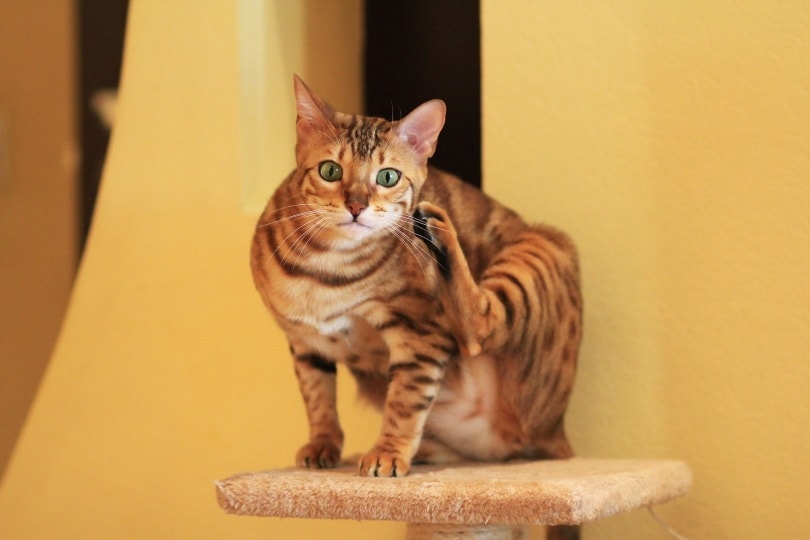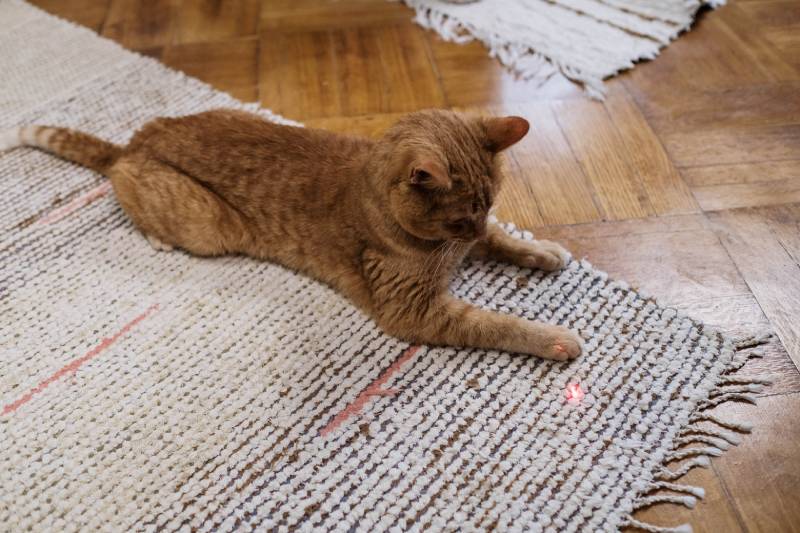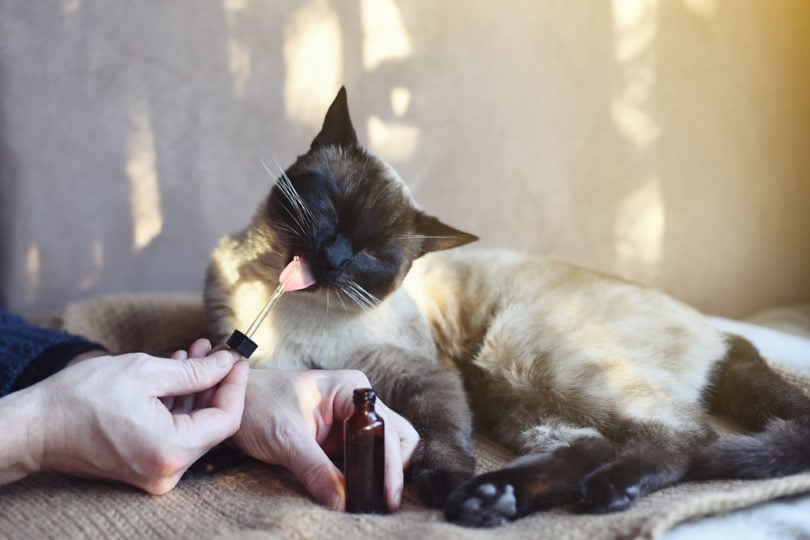Flame Point Ragdoll Cat – Facts, Origin & History (With Pictures)
Updated on
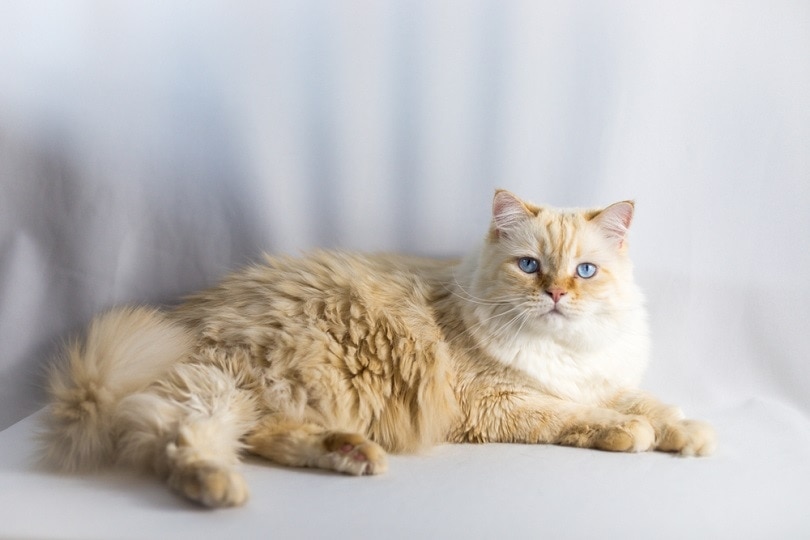
Of all the cats in the world, one of the most bewitching is the Flame Point Ragdoll Cat. It’s born completely white but receives a very unique coat as it matures, with distinct markings that set it apart from other breeds. While still primarily white, splashes of orange or red appear around their ears, faces, and tails. The red and orange splotches look like the points of a flame, which is where this beautiful breed’s name comes from. If you’re curious, read on to find out more about the Flame Point Ragdoll cat and where it comes from.
The Earliest Records of Flame Point Ragdoll Cats in History
The history of the Flame Point Ragdoll cat started in the 1960s with an American cat breeder named Ann Baker. Ms. Baker, who lived in California, bred two long-haired white cats, and the Flame Point Ragdoll was born. The kittens were nearly all white except for flame-like splotches of red and orange on their faces, ears, and tails.
When they were first introduced, Ms. Baker’s unique cats were known as “red point” and “orange point” ragdoll cats, but that was changed to Flame Point Ragdoll sometime during the 1980s as the cats became more popular with cat fanciers across the United States.
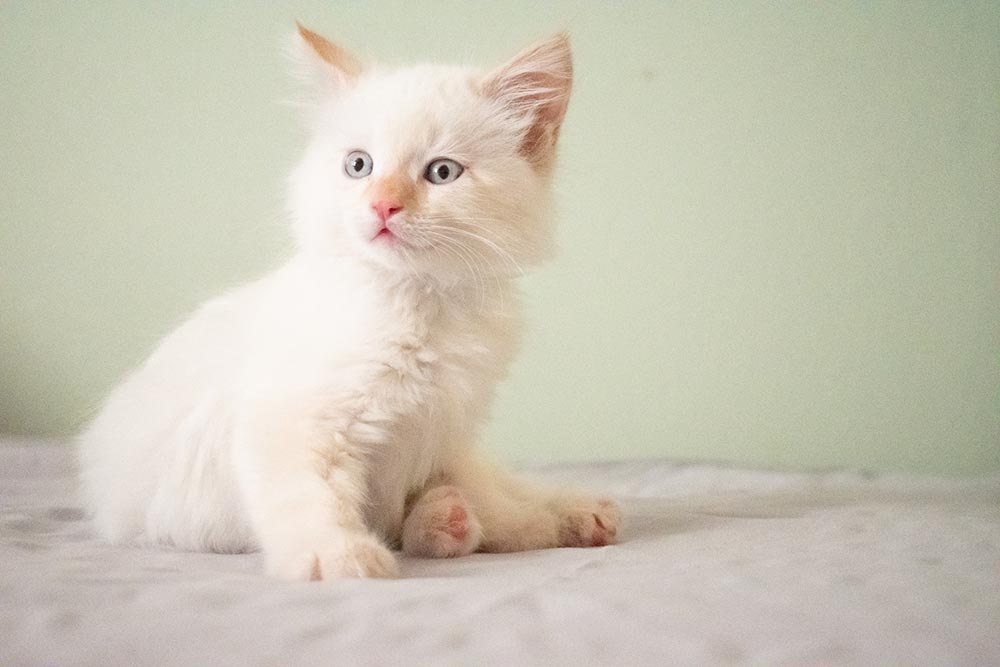
How Flame Point Ragdoll Cats Gained Popularity
What’s genuinely interesting about Flame Point Ragdoll cats is that, until the 1990s, breeder Ann Baker protected her unique cat breed from other breeders. For that reason, the Flame Point Ragdoll breed was slow to develop and gain a following. That started changing, however, during the 1970s as word of the Flame Point Ragdoll’s affectionate nature and docile temperament began to spread around the United States.
After Ms. Baker died in 1997, more breeders started breeding Flame Point Ragdolls, and since then, the breed’s popularity has grown profusely. That’s not a surprise when you consider the Flame Point Ragdoll cat’s personality, which is calm, affectionate, and, as some would explain it, “dog-like.” Flame Point Ragdolls, for example, love to fetch, stay low to the ground in their home rather than up high like most cats, and make excellent lap cats.
Formal Recognition of Flame Point Ragdoll Cat
The Flame Point Ragdoll Cat is recognized by TICA, The International Cat Association, and the Cat Fanciers’ Association (CFA). The Flame Point Ragdoll is also recognized by the International Feline Federation or Fédération Internationale Féline (FIFé). FIFé is also one of the founding nine members of the World Cat Congress. In the United Kingdom, the Flame Point Ragdoll is recognized by the Governing Council of the Cat Fancy (GCCF).
Top 6 Unique Facts About the Flame Point Ragdoll Cat
1. Flame Point Ragdoll Cats Are Born Completely White
When first born, Flame Point Ragdoll cats are all white. It isn’t until a few weeks to months later that their orange and red fur starts to show. For this reason, many cat experts recommend waiting until a Flame Point ragdoll is a few months old before adopting if their coat color is important to you.
2. They Come in Three Color Patterns
Flame Point Ragdoll cats come in 3 color patterns, including flame point (the most common), tabby, and tortoiseshell. None of the color patterns make one Flame Point Ragdoll cat more or less valuable than another.
3. Flame Point Ragdoll Cats Are Expensive
The typical Flame Point Ragdoll costs between $500 and $2,000, depending on the breeder, where you live, their lineage, etc. In other words, these are expensive cats. You should note, however, that you can often find these beautiful cats at animal shelters.
https://www.instagram.com/p/CoS7-SCy2dq/?utm_source=ig_web_copy_link
4. You Can Train a Flame Point Ragdoll to Do Tricks
Referred to sometimes as a “puppy cat,” Flame Point Ragdoll cats can be trained to fetch and do other tricks. They like to be trained and seem to enjoy learning tricks, also. They don’t, however, like to be walked on a leash.
5. Flame Point Ragdolls Have a Predisposition to Cardiovascular Health Problems
Unfortunately, the Flame Point Ragdoll breed suffers from cardiovascular (heart) problems far more often than other cat breeds. It’s essential to feed them a lower-fat diet and ensure your Flame Point Ragdoll gets plenty of exercise.
6. They LOVE to Scratch
Flame Point Ragdoll cats love to scratch, and if you don’t want them to destroy your furniture and carpets, you must get something else to scratch, like a post, cat jungle gym, or other scratching item. Experts recommend getting your Flame Point something to scratch immediately after adopting them so that no bad habits start in the interim.
Do Flame Point Ragdoll Cats Make Good Pets?
From all reports, it can be concluded that Flame Point Ragdoll cats make excellent pets. They are affectionate, like to cuddle, can be trained easily, and will seek out attention if they get attention back in return. Flame Point Ragdolls are said to get along well with other animals and are so playful that some people compare them to dogs. Yes, the Flame Point Ragdoll has a few health issues, but regular veterinary appointments can ensure it stays healthy. At the end of the day, they make wonderful companions and fantastic family pets.
Final Meows
The Flame Point Ragdoll Cat hasn’t been around for a long time but has become quite popular. Flame Point Ragdolls were first bred in the 1960s but became popular in the 1980s. They are gentle, affectionate cats that like being around people and will surprise you with their affection. If a loving, amusing, and playful cat is what you’re looking for, the Flame Point Ragdoll will be a perfect fit.
Featured Image Credit: Carolyn R, Shutterstock

